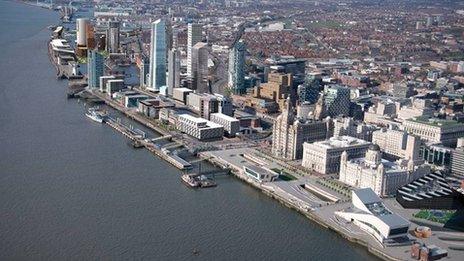Is Edinburgh's world heritage status under threat?
- Published

There are concerns over the impact of the new St James development on the skyline
Two new hotels planned for Edinburgh have led to concerns that the city is in danger of damaging its reputation as a world heritage site and could even result in it losing its Unesco status.
The brutalist 1960s architecture of the St James Centre at the east end of Edinburgh's main shopping thoroughfare makes it one of the least loved buildings in the whole of the city.
Yet plans to redevelop it have drawn strong criticism from conservation bodies and fears for the capital's continued reputation as an internationally important example of architecture and planning.
Dr James Simpson, from the UK committee of the International Council on Monuments and Sites (Icomos), told BBC Scotland: "It was always very hard to imagine that anything happening to the St James Centre, which is probably the worst development ever to have happened in the city, could make things worse.
"But certainly in respect of its impact on the skyline this particular St James hotel "walnut whip" proposal is actually worse than the St James centre."

The current St James Centre is one of the least loved buildings in Edinburgh
The design of the new hotel has been likened to a chocolate fondant confection or a Mr Whippy ice cream due to its spiralling metallic ribbon structure. It has also been the subject of far less polite comparisons.
Dr Simpson and other Icomos UK delegates will conduct a visit to the city this month over concerns about planning decisions.
Although the UK committee cannot make heritage status decisions, it can report to the Paris-based Icomos which offers advice to Unesco on world heritage sites.
Dr Simpson, a founding partner at Simpson & Brown Architects, based in Edinburgh, says Edinburgh City Council ignored the advice of their own planning officials to pass the St James hotel plans.
He says: "The principal concern is its height. This proposal breaks many of the development plan policies in the city."
"It obstructs views from many vantage points of the skyline."
Dr Simpson is writing to Communities Minister Alex Neil to ask him to try to overturn the decision.
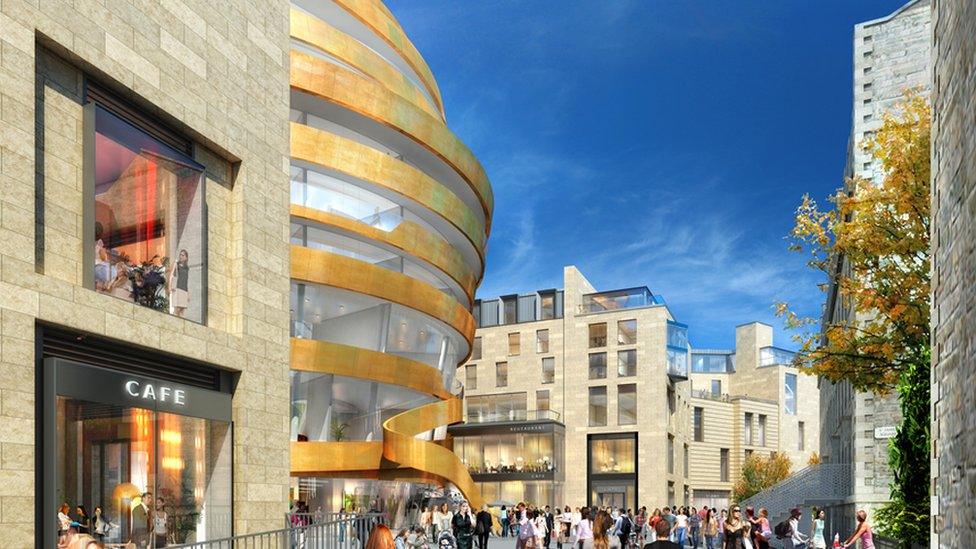
The new St James Centre hotel has been compared to a Walnut Whip
There is also concern about another planning application for a hotel, which has been submitted in the past few weeks.
The landmark Old Royal High School building on Calton Hill could be transformed into a luxury five star hotel if permission is given to build two wings at the side of the existing buildings to house the bedrooms.
Adam Wilkinson, director of conservation charity Edinburgh World Heritage, says the former Royal High School is "one of the three finest Greek Revival buildings in the world".
"It sits on Calton Hill, which is absolutely totemic," he says.
"This was at one time mooted to be the home of the Scottish Parliament so it has some major significance."
Mr Wilkinson says that after planning advice was ignored over the St James Centre he is worried about what may happen at the Royal High School.
He says: "What is proposed for the Royal High School is six storeys of hotel right next to it in a very sensitive location and while it would be wonderful to have a very high-end six star hotel in the city there are other places where it could go without causing so much damage.
"This proposal is being pushed terribly hard at the moment and we fear if it goes through it will set Edinburgh on the route down towards getting on to an 'in danger' list and if further poor decisions are made down towards removal."
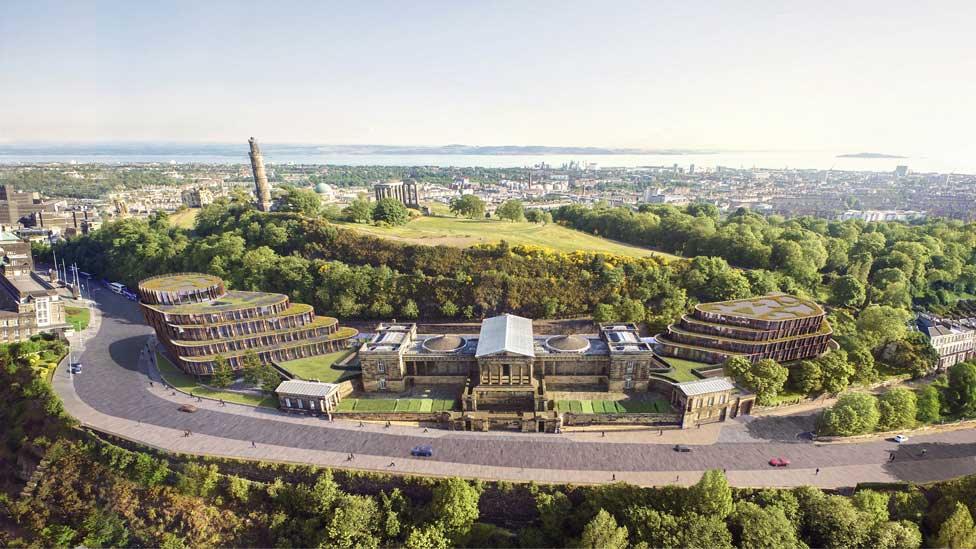
Two new wings at the sides of the Old Royal High School building would house the hotel's bedrooms
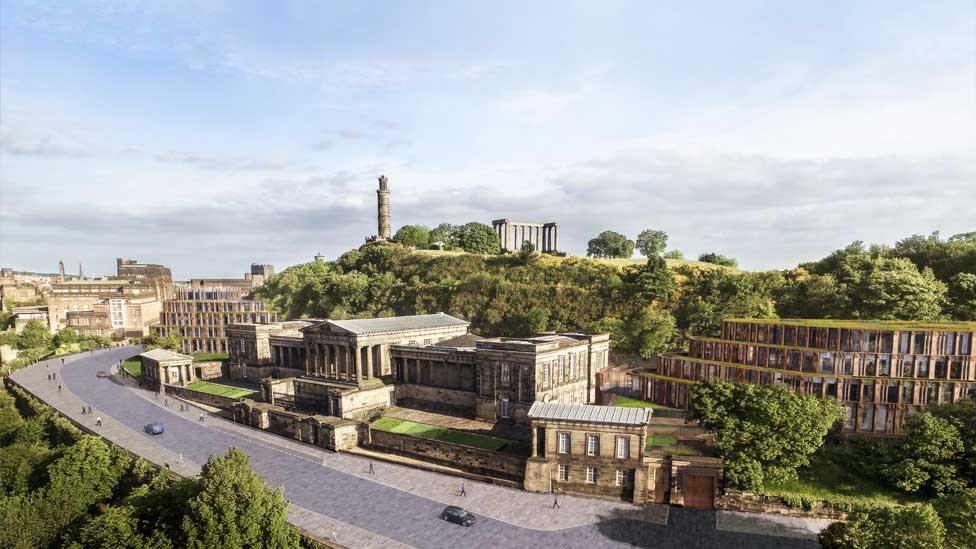
An artist's impression of the new hotel on Calton Hill
Edinburgh gained its Unesco World Heritage status for both its medieval Old Town and Georgian New Town in 1995. It covers about 4,000 buildings in the site area, most of which are privately owned.
Dr Simpson says it would take a "long time" for Edinburgh to lose its heritage status and he would not to say there was an "imminent risk".
However, both he and Mr Wilkinson expressed concern that continued developments which were not well managed could create problems.
Mr Wilkinson says only two world heritage sites have ever been removed from the list.
"The first was an oryx sancutuary in Arabia where the number of oryx declined rapidly and there was some useful oil underneath the ground so that was removed by mutual consent," he says.
"Then in the Elbe valley around Dresden in Germany, the site was removed from the world heritage list after a dual carriageway and large bridge was ploughed through the valley which was thought to damage the outstanding universal value."
Closer to home, a joint report by Icomos and Unesco criticised a proposed £5.5bn development near Liverpool's docklands in 2011.
Unesco decided the scheme, involving skyscrapers, could "irreversibly damage" the historic waterfront.
Director of Edinburgh World Heritage Adam Wilkinson explains his concern that the city could lose its UNESCO World Heritage Status
It resulted in the site being placed on Unesco's "world heritage in danger" list.
Richard Williams, professor contemporary visual cultures at Edinburgh University, is sceptical about whether Unesco status matters.
He says: "One of the arguments that is put in front of us is that Unesco status encourages tourism.
"As far as I can see about 90% of Edinburgh's tourists come during the festival and they come to see stand-up, they don't come to see architecture.
"We know from the example of Dresden that you can have Unesco status and lose it and still continue. Dresden still exists, people still visit it."
Mr Williams adds: "What is being proposed in Edinburgh is change which in any other city would not cause controversy.
"But Edinburgh being Edinburgh, any sort of change does produce a sort of neurotic reaction."
Edinburgh City Council said the Unesco World Heritage Status was something the council was "immensely proud of and takes very seriously".
It said: "We will continue to work closely with Historic Scotland and Edinburgh World Heritage to maintain this.
"It is inevitable that new developments will be attracted to the centre, and this is important for the city to evolve.
"We are committed to managing this process carefully and ensuring that the greatest consideration is given to its historic environment, while ensuring the city's future economic success."
A Scottish government spokeswoman said: "Decisions on planning applications are for the relevant local authority in the first instance. It would be inappropriate to comment on an individual planning application which may come before Scottish ministers.
"In circumstances where a decision notice has been issued, Scottish ministers have no further locus to intervene in the application nor can they comment on the planning authority's handling of the case.
"Ministers would only consider intervening in cases where there are issues of genuine national significance that would warrant them determining an application."
- Published2 September 2015
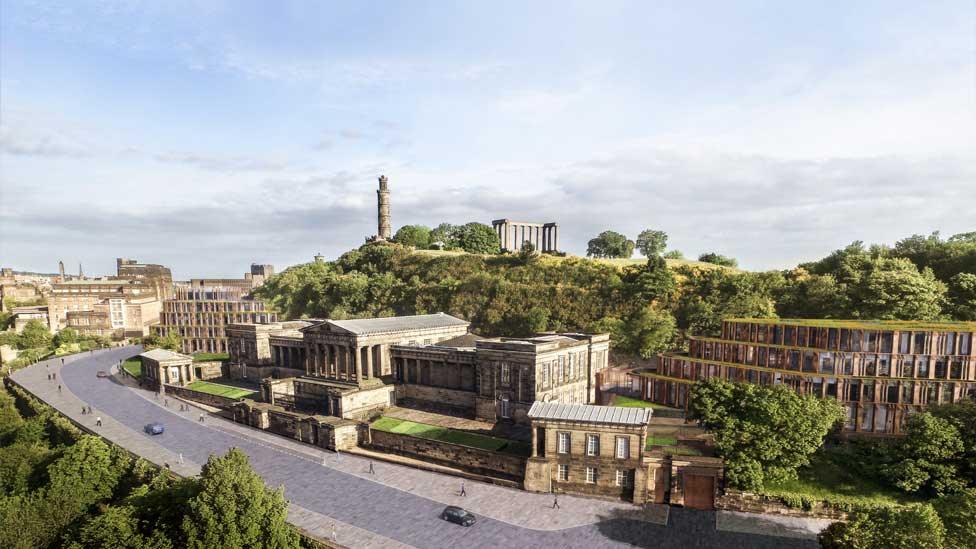
- Published4 March 2015

- Published29 January 2014

- Published24 August 2013
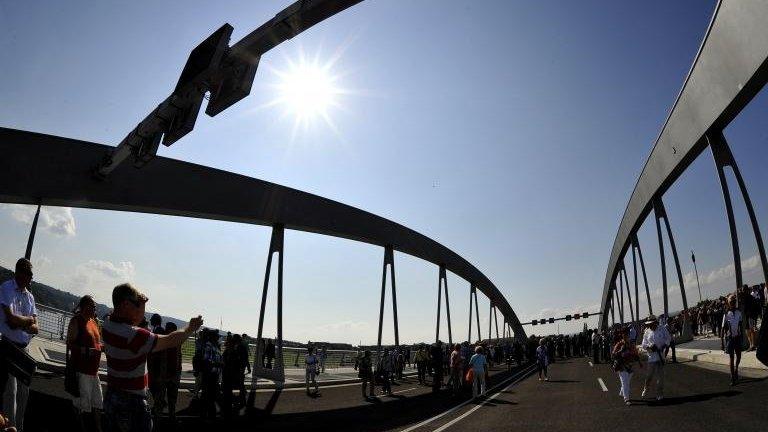
- Published26 June 2012
